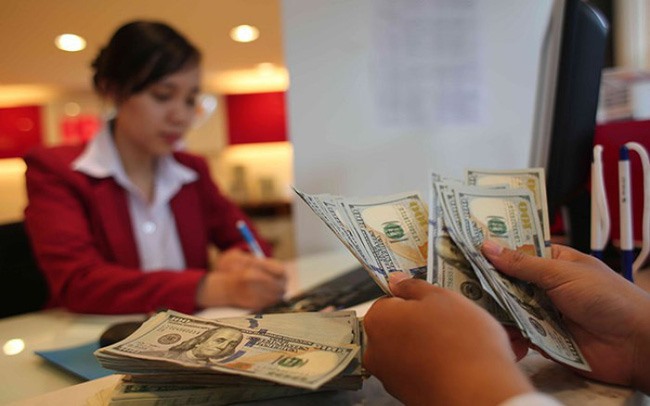Governor of the State Bank of Viet Nam (SBV) Le Minh Hung has recently directed the entire banking industry to strictly control foreign currency lending to better minimise dollar speculation and fight against dollarisation in the economy.

Governor of the State Bank of Viet Nam (SBV) Le Minh Hung has recently directed the entire banking industry to strictly control foreign currency lending to better minimise dollar speculation and fight against dollarisation in the economy.
According to the SBV’s current regulations, commercial banks can still provide short-term loans in foreign currencies to export firms that need funds for production and have turnovers in foreign currency until the end of this year. After receiving such loans, the exporters must immediately sell the amount of foreign currency borrowed to the lenders to get Vietnamese dong, using the spot forex trading method, except in cases where the foreign currency will be used to make payments.
It was estimated that outstanding foreign currency loans, mainly in US dollars, of banks, especially State-owned ones, were significant at nearly VND300 trillion (US$12.76 billion).
VietinBank topped the list with outstanding foreign currency loans of VND109.978 trillion by the end of June, followed by Vietcombank with VND99.254 trillion and BIDV with VND86.254 trillion.
Some private banks also reported high foreign currency loans, such as MB with VND25.44 trillion, Sacombank with VND12.73 trillion, Eximbank with VND10.45 trillion and Techcombank with VND10.1 trillion.
Exporters prefer borrowing in dollars as the interest rate for dollar loans is lower than those in dong. Currently, banks are listing interest rates at 2.8-4.70 per cent per year for short-term dollar loans and 4.5-6.0 per cent for medium and long-term dollar loans. Meanwhile, interest rates are 6-9 per cent per year for short-term dong loans, and 9-11 per year for medium- and long-term dong loans.
According to SBV’s regulations, the interest rate for dollar deposits at banks is zero per cent, but banks said that they have to spend 0.7 per cent for provision funds in dollar loans and some 1.5 per cent for operating costs.
Experts also recommended SBV tighten foreign currency lending, especially when the pressure on the country’s dollar/dong exchange rate is forecast to rise.
If SBV prohibited foreign currency lending, banks would have to sell the dollars to SBV and get dong for lending. Meanwhile, it would help SBV increase the country’s foreign reserves, better control foreign currency supply and exchange rate, as well as fight against dollarisation of the economy, the experts said.
Banking expert Phan Minh Ngoc said that dollar lending makes dollarisation of the economy more serious. As more local people use the dollar in their daily transactions, the effect of the central bank’s policies would be reduced.
Ngoc took inflation as an example. When inflation is high, the central bank wants to increase interest rates to control it. However, due to the dollarisation in the economy, local people will prefer borrowing in dollars rather than in dong, which will mean the central bank’s interest rate hike policy to fight inflation will have little effect. This has been seen in some countries with hyper-inflation, where the dollar replaces the local currency while the countries’ central banks are unable to do anything.
Though SBV had planned to stop foreign currency lending several times, it decided to extend such loans to help local exporters increase competitiveness and boost exports since their businesses and production face difficulties according to the Government’s incentive policies.
However, SBV affirmed that it was only a short-term policy. In the long run, the central bank will discontinue the policy, and firms must gradually shift from borrowing to buying and selling foreign currencies. — VNS





